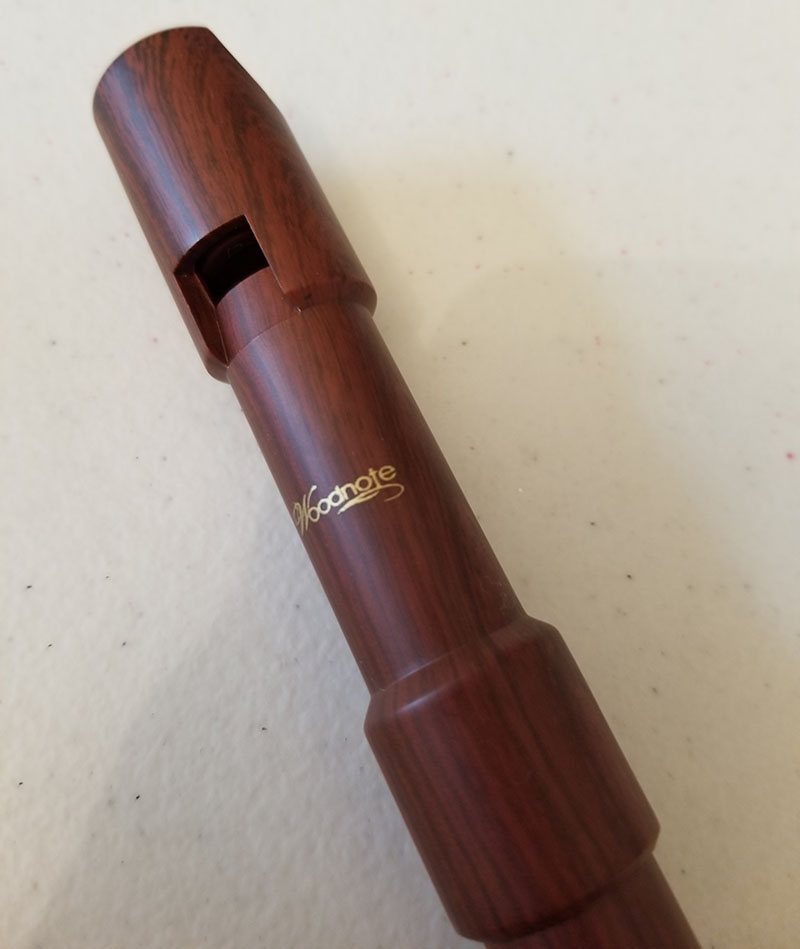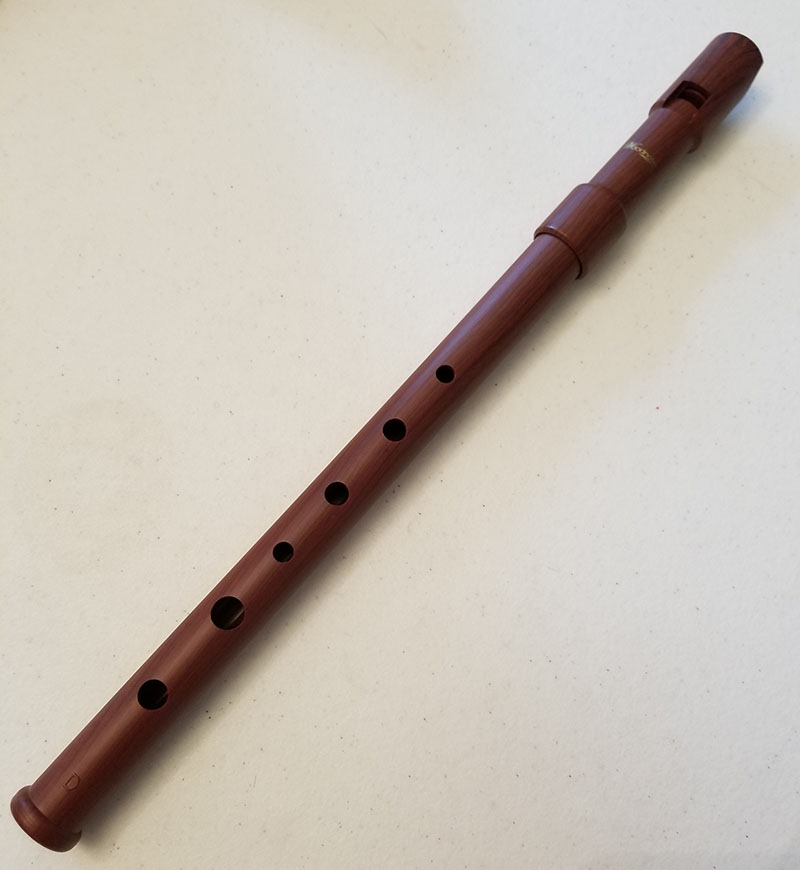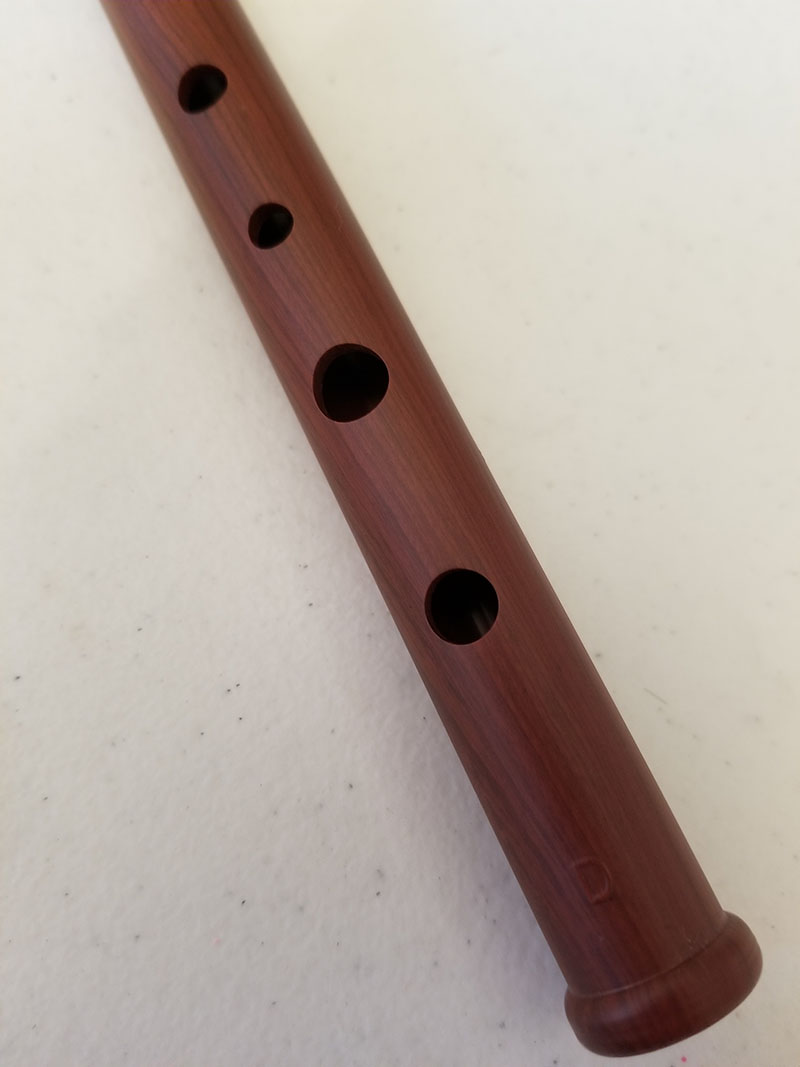Direct link to review: http://tinwhistler.com/Reviews/Details/71
Woodnote D Review
(Review written December 2018)
Preface
I have a number of inexpensive whistles in my arsenal. And I feel like I don’t really give them enough attention on this site. So, I’m going to be taking a break from reviewing the expensive whistles for a little while and focus on looking at the less pricey options I have in my whistle bag.
You should note that the price listed above is for the wood grain whistle. The matte black option is a little under half the price at $9.99.
I came into this review thinking of the Woodnote as a “Susato Clone.” And while the whistle looks similar and shares some characteristics, it has it’s own character.
At a Glance
Whistle Reviewed: Woodnote D
Models Available: C and D
Construction: Plastic in matte black or woodgrain
Price at time of review: 19.99
Available From:
Woodnote Music USA
How Acquired: Purchased secondhand
Appearance

A shot of the head of the whistle, showing the mouthpiece, labium ramp and tuning slide. I have one of these in black and one in woodgrain, but all of my photos are of the woodgrain, as I feel it looks more interesting.

A shot of the full whistle. The whistle is a medium brown plastic with a streaked ‘grain’ pattern painted on the outside. The inside of the whistle is a uniform brown.

The tail end of the whistle.
Playing Characteristics
Sound clips of the whistle:
Otter’s Holt
Video clips of the whistle:
Otter’s Holt (recorded 2017)
Tone:
The Woodnote has a slightly complex timbre. No matter how the whistle looks, the sound isn’t anything like a Susato to me. There’s a hard edge to the note chiff that I don’t hear in a Susato, The chiff isn’t really woodsy or airy, so I struggle to describe it adequately.
Volume: Oh my goodness is this whistle loud. I thought my Tornton whistle was loud, but this one takes the cake. I had to get out my decibel meter just to be sure. The Woodnote tops out at 85.6 decibels in the 2nd octave, beating out my Thornton by just a hair (83 decibels). That’s about as loud as a milling machine or a motorcycle at 25 feet away.
Responsiveness: Quick and agile. I don’t have any trouble making this whistle do what I want.
Tuning: This whistle can be blown in tune across the range, with some caveats. The G is about 30 cents sharp when played with the expected breath. It takes a lot less breath to sound this note in tune than it does to sound the F# note. The C# takes considerably more air to breathe into tune than the 2nd octave D above it. This means that I’d have to really pay attention to my breathing to stay in tune, especially when playing with other musicians.
The 2nd octave takes considerably more pressure to sound than the first octave, but the 2nd octave breathing requirements for the G note are in line with where I’d expect them to be.
Unfortunately, I can’t make this whistle sound a second octave B at all. I tried on both of my Woodnote whistles, with the same result. Either I am not blowing hard enough, and get the ‘train whistle’ effect, or I push just a hair harder and the whistle fails to make a sound at all other than rushing wind.
C-natural: Cross-fingering with OXXOOO plays a C natural with about the same pressure requirements of the C#, but no other fingerings really produce an acceptable C natural
Hole size and placement: The holes are well-centered and fairly evenly spaced along the whistle. The E and F# holes aren’t particlarly close together like they can be on some whistles.
Air volume requirements: Lower than average. I can squeak a few more notes out of this on one breath than I can an Oak. In the first octave, that is. The second octave requires a tad more breath.
Air pressure requirements: Average, in the first octave. But you really have to push that second octave to be in tune.
Clogging: Average to poor. After a few minutes playing, I could hear the moisture start cutting out the second octave on this whistle, even when I couldn’t blow much moisture out of the mouthpiece. I’d definitely want to give this one the duponol treatment if I were to be playing it for extended periods of time.
Wind Resistance: Pretty good. I was able to play this one in a steady breeze without any noticeable effect on the music. I even turned so that the breeze cut directly across the windway, without losing the music.
Summary
Loud, slightly complex and easy to blow in the first octave. Due to it’s harsh tone chiff, extreme volume, and complexity in breathing the notes into tune, beginners may have trouble with this one. The inability to sound a second octave B is a deal-killer for me, personally.

